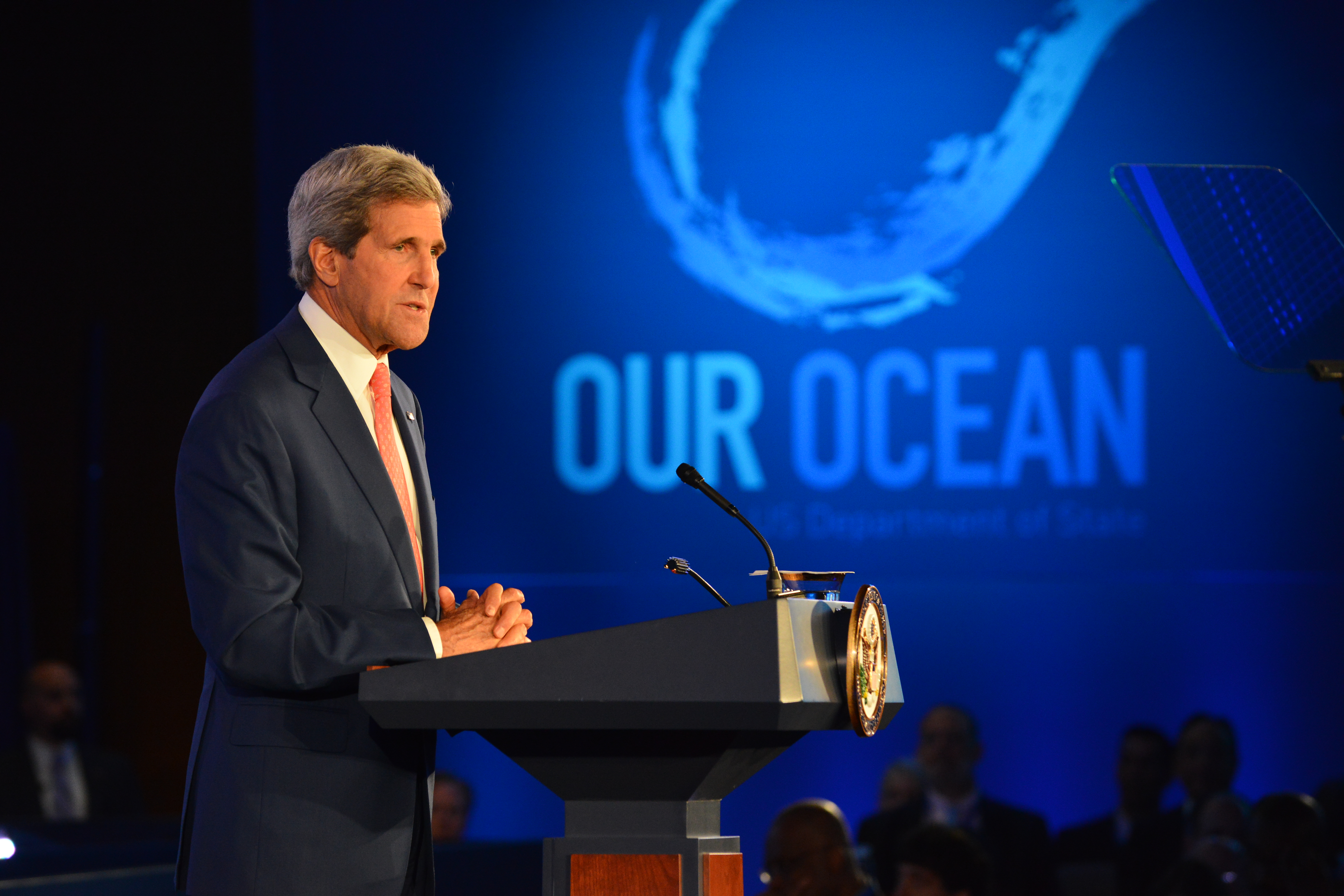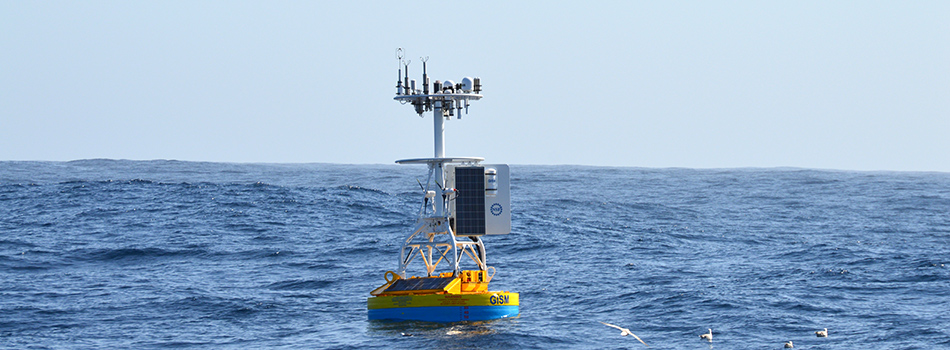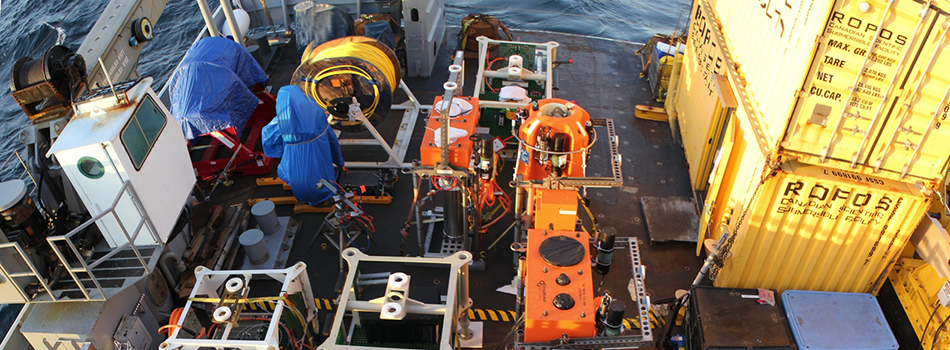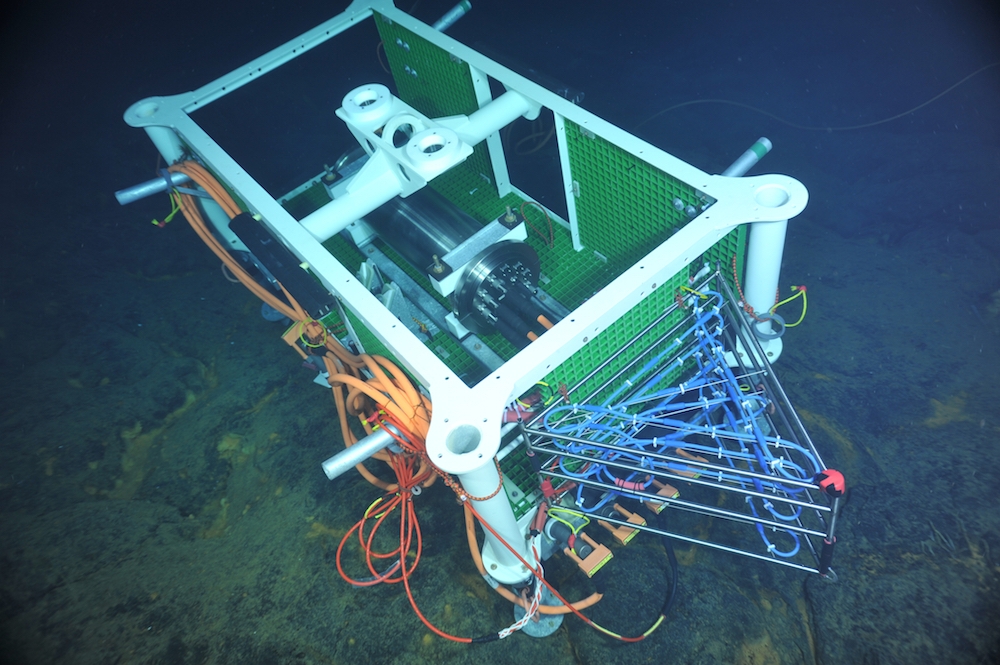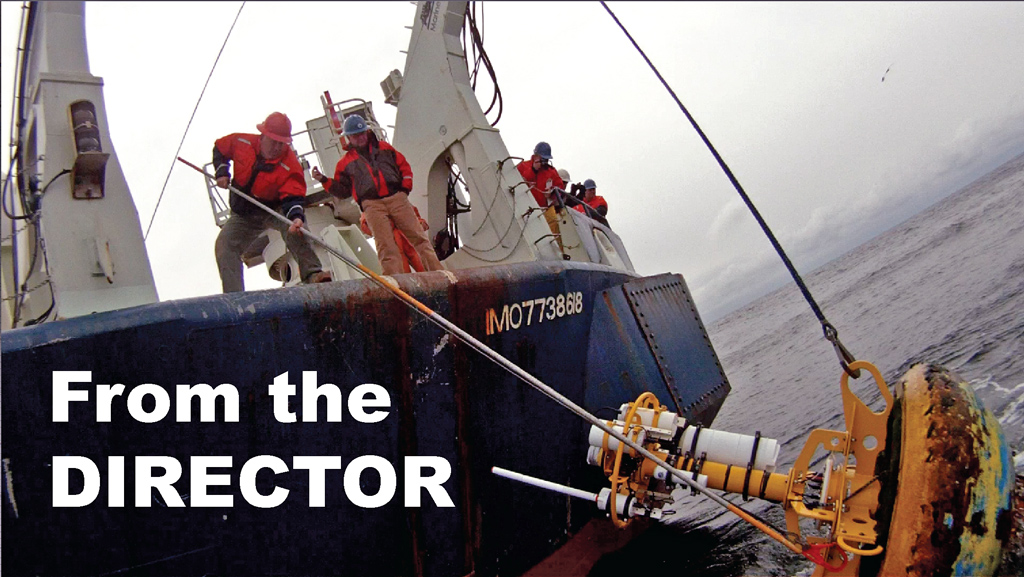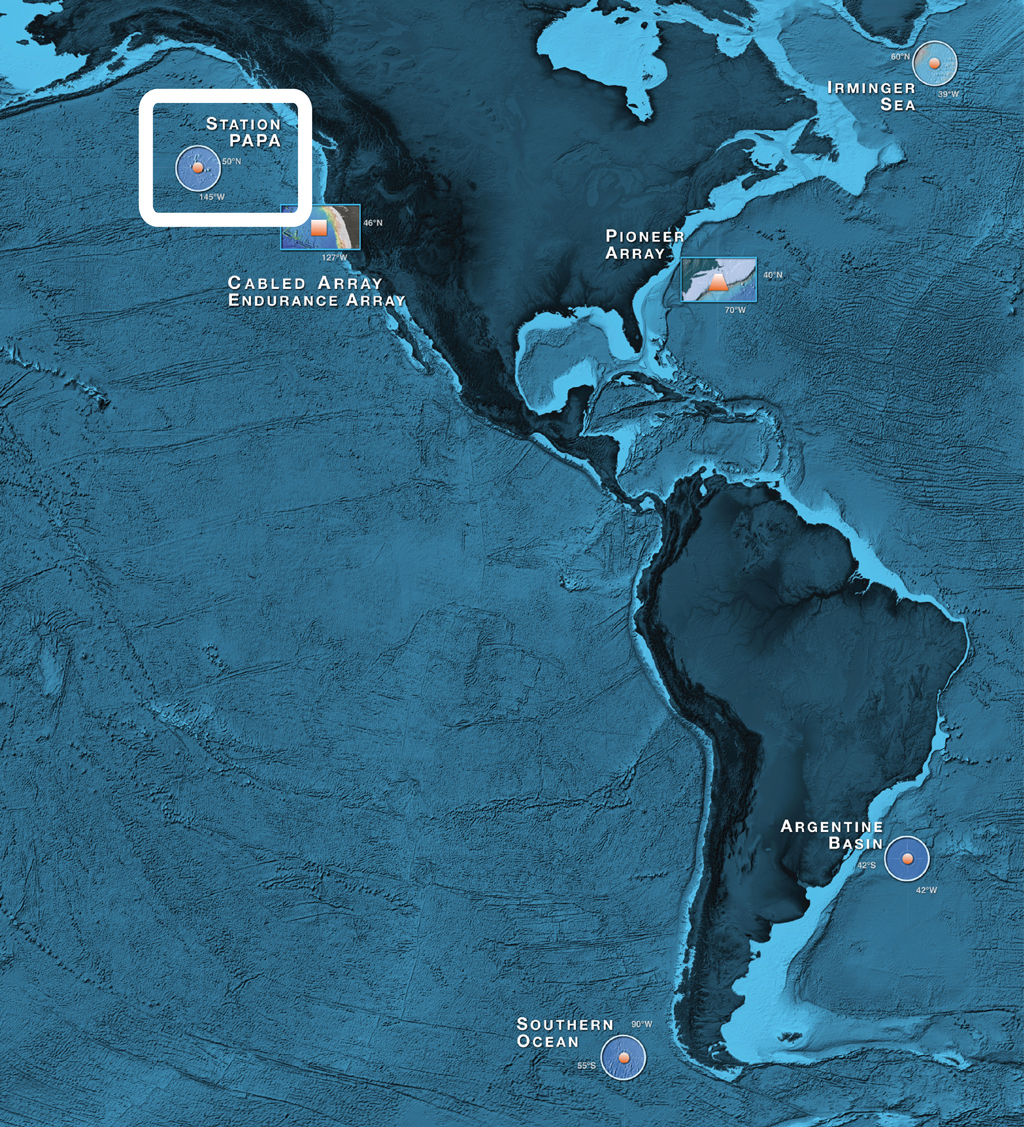Posts Tagged ‘2020’
OOI Status Update: January 15, 2016
The OOI Data Team are working toward a data release schedule for downloading datasets from the OOI data portal and continue to conduct configuration validation of data streams.
OOI data continue to be available for plotting on the OOI Data Portal. Select data streams are available for download from THREDDS and historical cruise data are available for download from the OOI website.
The Cabled Array team will host an Introductory Webinar Tues. Jan. 19, 1pm ET to present an overview of the Cabled Array infrastructure, focusing on engineering details, including power, communications and more. A brief opportunity to answer questions will also be available. The session is scheduled to last up to 2 hours. Please sign up for the webinar online by Jan. 15th
OOI Operations Staff are also available to meet with potential investigators who wish to submit proposals to deploy instruments on the OOI. Investigators can schedule an appointment to meet virtually with OOI Operations Staff to discuss technical requirements, testing, and answer any other questions researchers might have regarding adding instrumentation to the OOI arrays. Cabled Array meetings are scheduled for Jan. 20-22. Pioneer and Endurance Array meetings are scheduled for Feb. 2-3. Global Array meetings are scheduled for Feb. 4-5. Click here to view available times.
We would like to introduce the new OOI PI, Rear Admiral (Ret.) Jon White, to the OOI Team. Jon, who also serves as the President and CEO of the Consortium of Ocean Leadership, will serve as OOI PI on an interim basis with the help of co-PI Sue Banahan. Ocean Leadership is actively conducting an abbreviated search for a new permanent PI. Jon White has an extensive background working with oceanographic systems and operations throughout his 32-year Navy career, culminating in his role as Oceanographer of the US Navy. Jon has a BS in Oceanography from Florida Institute of Technology, and a Masters in Oceanography and Meteorology from the US Naval Post Graduate School.
Read MoreOOI Construction and Data Status Update: December 31, 2015
On Dec. 13, the OOI launched its new website and made all OOI Cruise Data available to the public. Key resources on the new website include the OOI Data page detailing individual data tools, data products, and quality control information; the Researchers page where scientists can learn more about submitting OOI-related proposals, science workshops, and the observation and sampling approach; and The Observatory page detailing all infrastructure, instruments, and technology used in the OOI.
Updates continue on the Cyberinfrastructure software and graphical user interface (the OOI Data Portal). Last night the OOI Cyberinfrastructure software underwent a successful upgrade of its asset management system. These updates were made to correct some of the issues found during the Dec. 4th upgrade, including updates to data description mapping and system stability. With this upgrade in place, the OOI Data Portal will be moved onto the production server today to undergo load testing. Upon successful testing, the OOI Data Portal will be made available to the public next week.
The OOI Data team continues to evaluate data streams to ensure that the data processing software and conversion algorithms are functioning properly and that delivered data products accurately reflect the telemetered and recovered data collected by the deployed instrumentation. Preloaded NetCDF files for essential ocean variables are being created and will be available for download in their entirety from a THREDDS server in the coming weeks. Evaluations of data science quality are ongoing and will continue over the next several months.
Next week, Jan. 5-7, the OOSC and UNOLs will host a workshop on OOI Coastal Data at the National Science Foundation in Arlington, VA. The goal of this public workshop is to provide a forum for potential users to further their understanding of the capabilities of OOI, and to learn possible approaches for accessing the data.
We continue to provide interim delivery of the Cabled Array seismometer and bottom pressure data through IRIS http://www.iris.edu/hq/. Delivery of Cabled Array tilt meter and co-located temperature plots continue through Dr. Bill Chadwick’s website.
You can subscribe to a mailing list to received updates and notification as additional data and functionality becomes available. We also look forward to your feedback as well as suggestions on the tools that would increase the efficiency of synthesizing the diverse data collected by the program.
For specific questions, please contact the HelpDesk.
Read MoreOOI Construction and Data Status Update: December 7, 2015
Testing over the weekend of the Cyberinfrastructure software upgrade identified some key issues that prevented the software from being released today as planned.
As the CI team works to resolve these issues, they will be able to make available incremental releases of data through the OOI website. The first of these releases should occur early next week. Details of each incremental release will be posted on the OOI website, including which data are available and instructions of how to access and download these data. Users can expect to see expanded data availability on a continuous basis with delivery accelerating as the software issues are resolved.
The OOI is successfully receiving data streams from deployed assets at all seven arrays. Those data are being archived within the OOI CI and the historical data sets will be made available upon release of the OOI Data Portal. Historical datasets begin in 2013 for the Pioneer Array, the Cabled Array, and Station Papa; in 2014 for Endurance Array and the Irminger Sea Array; and in 2015 for the Argentine Basin and Southern Ocean Arrays.
Read MoreOOI Construction and Data Status Update: December 2, 2015
Fall 2015 marked the completion of the build and deployment phase of all OOI marine infrastructure, including 7 arrays, 59 instrumented sites, 36 mobile assets, and over 900 instruments. The OOI Cyberinfrastructure system handles observatory mission command and control, management of data streams, and facilitates data download via an online user interface. The COL team has been focused on readying this CI for public access.
Cyberinfrastructure is undergoing a large software update that is currently in process. The software update is critical for access, as it provides essential bug fixes in data processing identified during internal system testing, as well as key enhancements to the user interface. The OOI CI system will be made available to the public on Monday, December 7. Expanded details about the specific roll-out schedule will also be posted on the OOI website early next week.
For specific questions, please contact the HelpDesk – help@oceanobservatories.org
Read MoreOOI Highlighted in Secretary Kerry’s Remarks at Our Ocean 2015 Conference
The second annual Our Ocean 2015 Conference was held in in Valparaiso, Chile on October 5-6, 2015.
This year, more than 400 leaders dedicated to protecting the ocean participated in the conference with the goal for each to commit to concrete actions to protect ocean areas and marine resources.
Secretary of State John Kerry gave opening remarks at the conference alongside of the Minister of Foreign Affairs of Chile, Heraldo Munoz and the President of Chile, Michelle Bachelet. In his opening remarks, Secretary Kerry highlighted the Ocean Observatories Initiative (OOI) as one of the United States projects committed to preserving the ocean. He pointed out that not only is the OOI important in terms of its breadth of the infrastructure, but also in its’accessibility to the public: “[W]e’ll be putting all of the information that we collect online – much of it in real time – so that the public or anybody who wants to can better understand ocean acidification and other changes taking place – and ultimately, better address and adapt to them.”
<!– The below links no longer work from state.gov
Click here for to read the transcript of the Secretary Kerry’s Speech
Click here for the list of actions the United States has committed to to protect the ocean
–>
Successful Turn of the Irminger Sea Array
The 2015 Irminger Sea Array cruise marked the first “turn” (recovery & reinstallation) of the moorings and gliders as well as a first look at the data collected during the first year.
Read More2015 Cabled Array Cruise, A Success for OOI Infrastructure and Scientific Discovery
The 2015 Cabled Array cruise marked the completion of installation at the Cabled Array, provided a first look at the April 2015 Axial eruption site, and led to the discovery of a new seep site on the continental slope.
On August 7th, the OOI Cabled Array team, along with 21 students and the remotely operated vehicle ROPOS, completed installation of the OOI Cabled Array, as well as its first maintenance cruise. A total of 118 instruments are now streaming data from the Juan de Fuca plate through 540 miles of fiber-optic cable to shore.
The R/V Thompson set sail on July 4th from the University of Washington on a 3-Leg, 35-day cruise with the objective to 1) deploy Deep Profiler Moorings on the continental slope, at the slope base off of Oregon, and at the base of Axial Volcano and 2) recover and reinstall junction boxes, mooring science pods, and instruments at the 6 cabled study sites comprising the Cabled Array. Over the course of the cruise, 13 platforms and 112 instruments were installed and ROPOS completed 55 dives. (more…)
Read MoreThe Plan To Create A ‘Fitbit For The Oceans’
This fall, an integrated infrastructure of sensor systems will sprawl, swim, and anchor itself across our oceans as part of the Oceans Observatories Initiative, a project 10 years in the making.
Read MoreOOI Construction and Data Status Update: August 14, 2015
OOI Construction and Data Status Update: August 14, 2015
Read MoreStation Papa Array Annual Maintenance and Profiling Glider Deployment
The Ocean Observatories Initiative (OOI) team in June 2015 conducted deployment and scheduled maintenance activities for the global component of the OOI infrastructure located in the Station Papa site, in the Gulf of Alaska.
Read More
